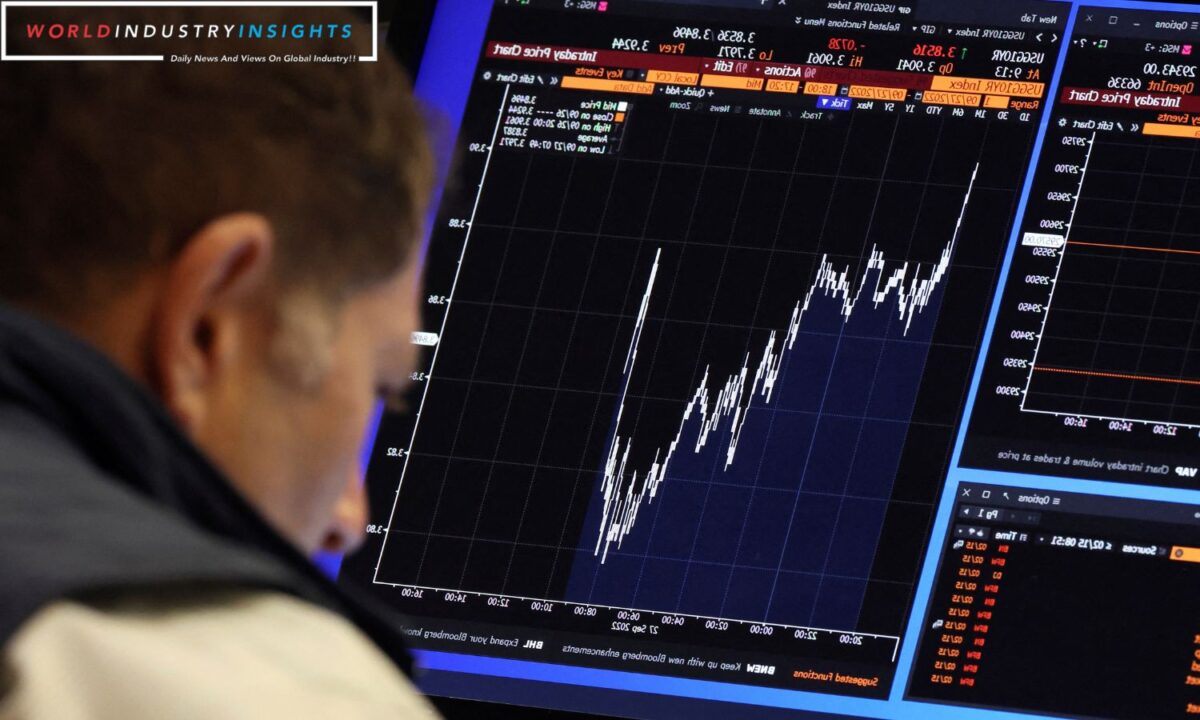World Largest Bond Markets: On Wednesday, U.S. 30-year Treasury rates surpassed 5%. This level has not been seen since 2007 due to a downward slide in global government bond markets. Germany’s 10-year borrowing costs rose to 3%, potentially hastening a global economic slump.
The strong U.S. economy, unexpected position unwinding, and belief in high-interest rates have dealt a severe blow.
The 10-year yields on the U.S. Treasury market, the basis of the world’s financial system, rose by 30 bps this week to 4.8%. So far this year, they have gone up by about 99 bps, more than the 200 bps increase in 2022, which was also rough.
On Wednesday, 30-year U.S. yields broke the 5% barrier, reminding people of the global financial crisis. Meanwhile, Germany’s 10-year Bund yield reached 3%, a significant development in a market where outcomes were near negative territory in early 2022.
On Wednesday, British 30-year government bond yields hit a 25-year high, surpassing 5%. This change is still being felt, as Australian and Canadian 10-year bond yields have risen over 50 bps this week.
Nordea‘s chief market strategist, Jan von Gerich, warns that further rapid rise may impact risk appetite, causing significant drops in equity markets and corresponding spread increases. When safety flows return, the situation should change.
Also Read: Asian Markets Await Nvidia Verdict: Will Tech Valuations Stand Against Bond Yield Surge?
The government’s borrowing cost impacts mortgage and business loan rates. The bond rout’s speed alarms the stock market. It has also caused the dollar to rise, which is bad for currencies like the Japanese yen.
Bond experts believe current trends indicate higher prices and lower yields in the future due to a worsening global economy. This worsens when buyers give up on rally bets due to market misplacement.
Juan Valenzuela oversees Artemis’s fixed-income business and can provide further details. “Currently, there’s strong sell-off momentum due to market mispositioning,” he says. As the Fed’s rate hike cycle ended, many considered buying government bonds a good idea. This skewed the market towards long positions.
The sell-off suggests more trouble ahead, potentially leading to a third consecutive year of losses in foreign bond markets. The MOVE index, measuring bond market volatility, is at its highest in four months. This indicates worsening market turmoil.
Padhraic Garvey of ING warns that the 5% threshold may become a permanent reality if we ignore it.
Analysts note the challenge businesses face in borrowing when inflation-adjusted rates rise. The increase in borrowing costs complicates central banks’ task of balancing high interest rates to combat inflation and manage a deteriorating economy.
The Rabobank rates strategy head, Richard McGuire, said, “In the long run, this move can lead to its own demise.” He predicts a recession and claims the current bond selling reinforces this belief. He believes the economy will worsen, impacting future demand.
Our Reader’s Queries
What are the top bond markets in the world?
The euro zone government bond market, valued at around $10-trillion, is expected to yield a return of 6.5% this year. This marks a significant rebound from the negative global bond returns witnessed over the past two years, largely due to rising inflation. In comparison, the market has outperformed U.S. Treasuries, which have seen a 3.5% increase this year, and UK gilts, which have risen by 2.4%, as per ICE BofA indexes.
In which market are most bonds traded?
Bonds can be issued on the primary market or traded on the secondary market. The latter allows investors to buy existing debt through brokers or other third parties.
Who are the big players in the bond market?
The market in question is primarily composed of governments, banks, and corporations. Banks play a crucial role in the bond market as they are key issuers. These banks can range from local ones to supranational ones like the European Investment Bank, which is known to issue debt in the bond market.
Who are the largest bondholders?
Corporate bonds have long been a favorite investment of insurers, making them the biggest institutional investors in this area. As a result, they have a significant impact on corporate funding and investment.


